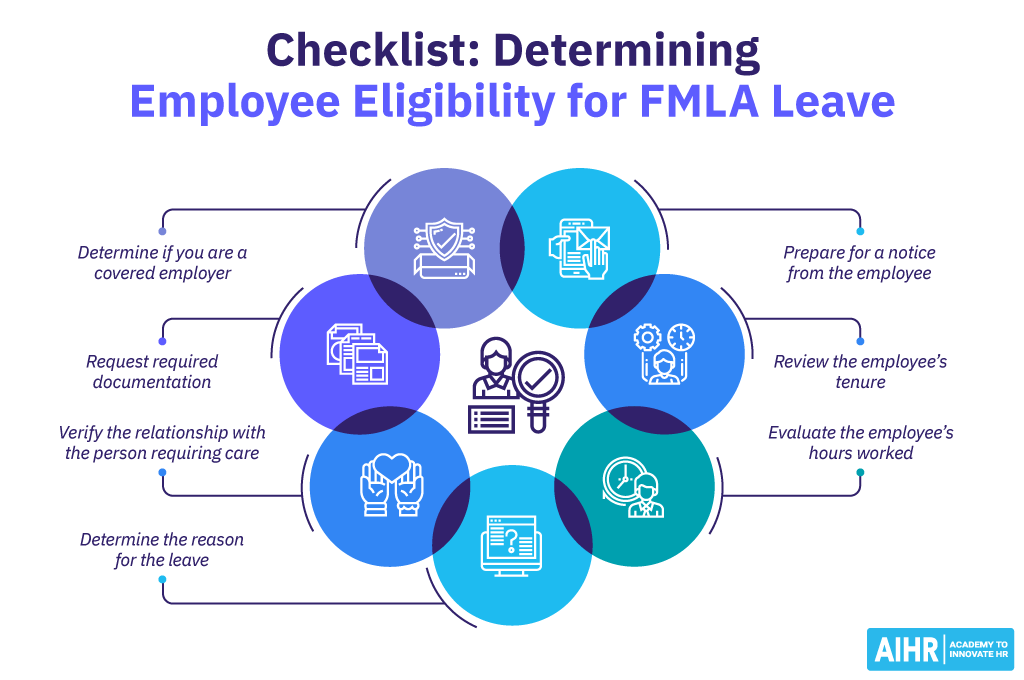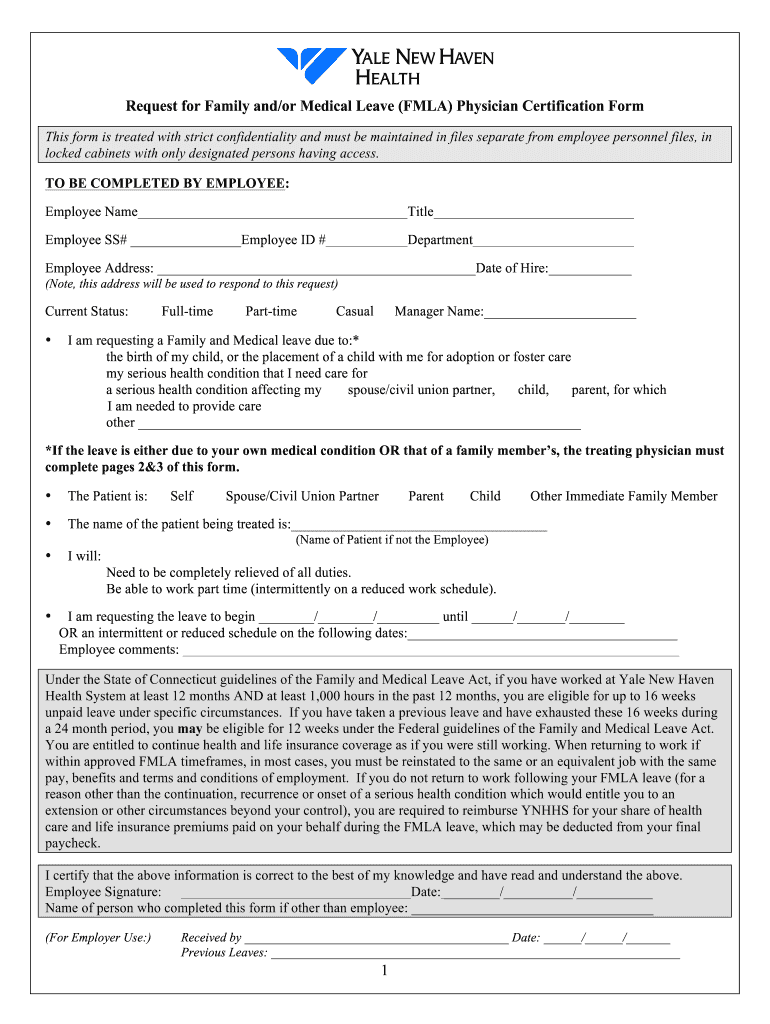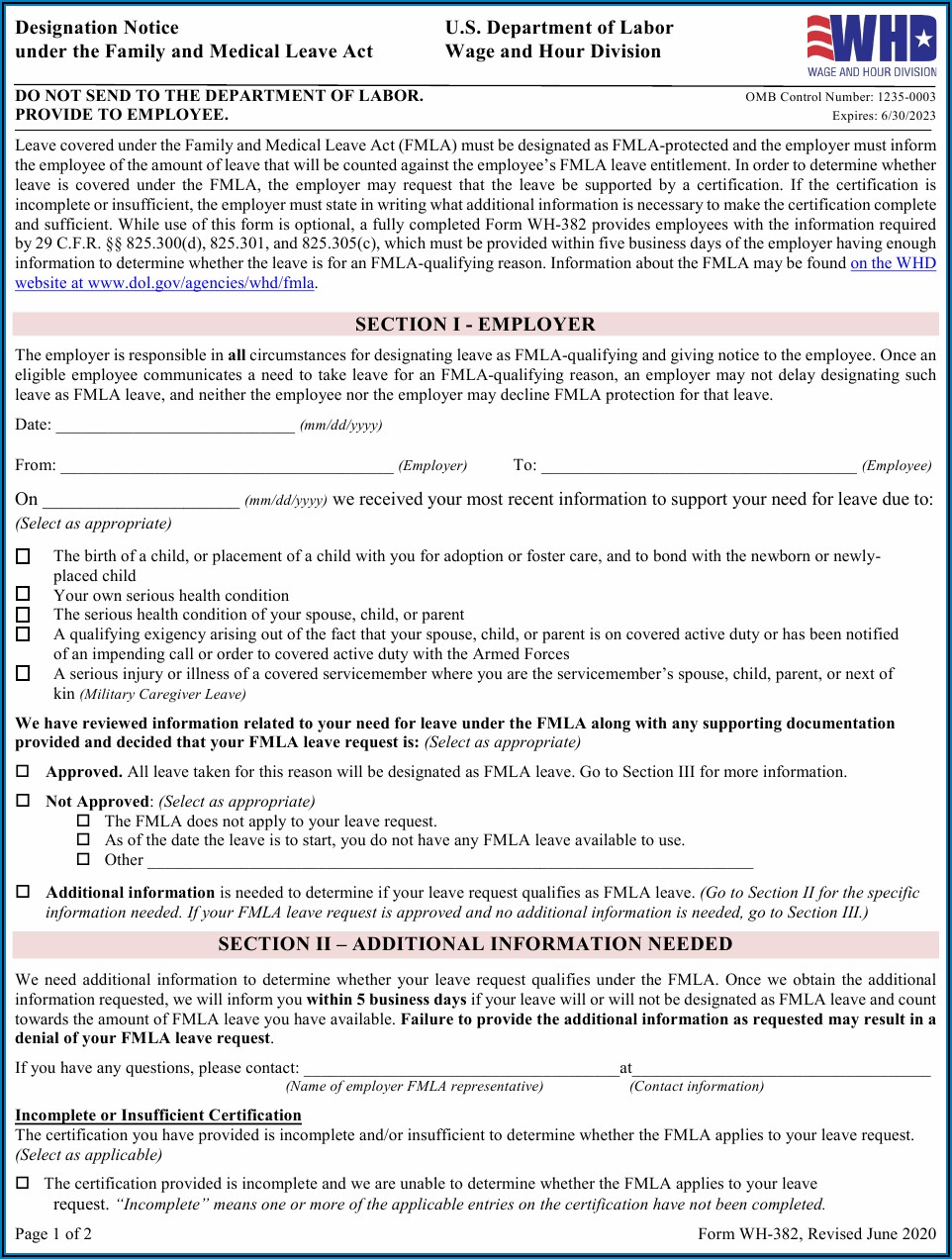FMLA Paperwork: What You Need to Know

When an employee needs to take time off due to a serious health condition, for the birth or adoption of a child, or to care for a family member, the Family and Medical Leave Act (FMLA) provides protections to ensure they have job security. Navigating FMLA paperwork, however, can be daunting for both employees and employers. This guide will help you understand the essential documents, how to fill them out, and common pitfalls to avoid, making the process as smooth as possible.
Understanding FMLA Eligibility

Before diving into the paperwork, it’s crucial to understand who qualifies for FMLA:
- Covered Employers: Businesses with 50 or more employees within 75 miles.
- Eligible Employees: Must have worked for the employer for at least 12 months, at least 1,250 hours during the previous 12 months, and at work where there are 50 employees or more.
Key FMLA Paperwork

The following documents are essential when applying for FMLA:
- Notice of Eligibility and Rights & Responsibilities (Form WH-381): Employers must provide this to inform employees of their eligibility status, rights, and responsibilities.
- Designation Notice (Form WH-382): Used to communicate whether leave is designated as FMLA leave.
- Certification Forms:
- Employee’s Serious Health Condition (Form WH-380-E)
- Family Member’s Serious Health Condition (Form WH-380-F)
- Qualifying Exigency (Form WH-384)
- Military Caregiver (Form WH-385)
📝 Note: Employers must provide certification forms within five business days of an employee's request for leave.
How to Complete FMLA Paperwork

Filling out FMLA paperwork involves several steps:
- Employee Initiates Leave: The employee should provide at least 30 days’ advance notice if the need for leave is foreseeable, or as soon as practicable if not.
- Notice of Eligibility: The employer provides Form WH-381. The employee must return this promptly to proceed.
- Certification Forms:
- The employee, or their healthcare provider, fills out the relevant certification form.
- Return the completed certification form to the employer within 15 calendar days.
- Designation Notice: After reviewing the certification, the employer issues Form WH-382.
| Form | Purpose | Who Completes |
|---|---|---|
| WH-381 | Notices Eligibility | Employer |
| WH-380-E | Employee's Serious Health Condition | Employee/Healthcare Provider |
| WH-382 | Designation Notice | Employer |
| WH-385 | Military Caregiver Leave | Employee/Healthcare Provider |

Tips for Employees

- Keep copies of all documents and forms for your records.
- Communicate clearly with your employer about your leave needs and when you anticipate returning.
- Follow up if you don’t receive responses from your employer in a timely manner.
Common Pitfalls

Here are some issues to watch out for:
- Insufficient Notice: Not providing enough notice or not being clear about the need for FMLA leave.
- Incomplete or Incorrect Forms: Ensure all forms are filled out properly to avoid delays or denials.
- Delays in Certification: Promptly return certification forms to expedite the process.
- Failure to Follow Up: Keep the communication lines open with HR or management.
💡 Note: Employers can request recertification once every 30 days, or if circumstances change significantly, or if doubt arises over the reported condition.
Final Thoughts: Understanding and properly handling FMLA paperwork can be the difference between a seamless leave process and a tumultuous one. Remember, FMLA is there to protect your job security when life's events require you to step away from work. By being proactive, well-informed, and maintaining clear communication, you can ensure that your rights are protected and your transition back to work is as smooth as possible. Use this guide as a stepping stone to navigate through the complexities of FMLA with confidence.
Can I take FMLA leave if my employer has fewer than 50 employees?

+
No, FMLA protections are only available to employees of employers with 50 or more employees within 75 miles.
What if my employer denies my FMLA request?

+
If you believe you’ve been wrongfully denied FMLA leave, you can file a complaint with the U.S. Department of Labor’s Wage and Hour Division or seek legal advice.
Do I have to use my paid leave before taking FMLA leave?

+
It depends on your employer’s policy. Some employers require the use of paid leave first, which will run concurrently with FMLA leave.
What’s the difference between FMLA and state family leave laws?

+
State laws might offer different eligibility criteria, leave amounts, or additional benefits. They can also apply to smaller employers where FMLA does not.
Can an employee take FMLA for intermittent leave?

+
Yes, FMLA allows for intermittent leave where an employee can take leave in separate blocks or work a reduced schedule.